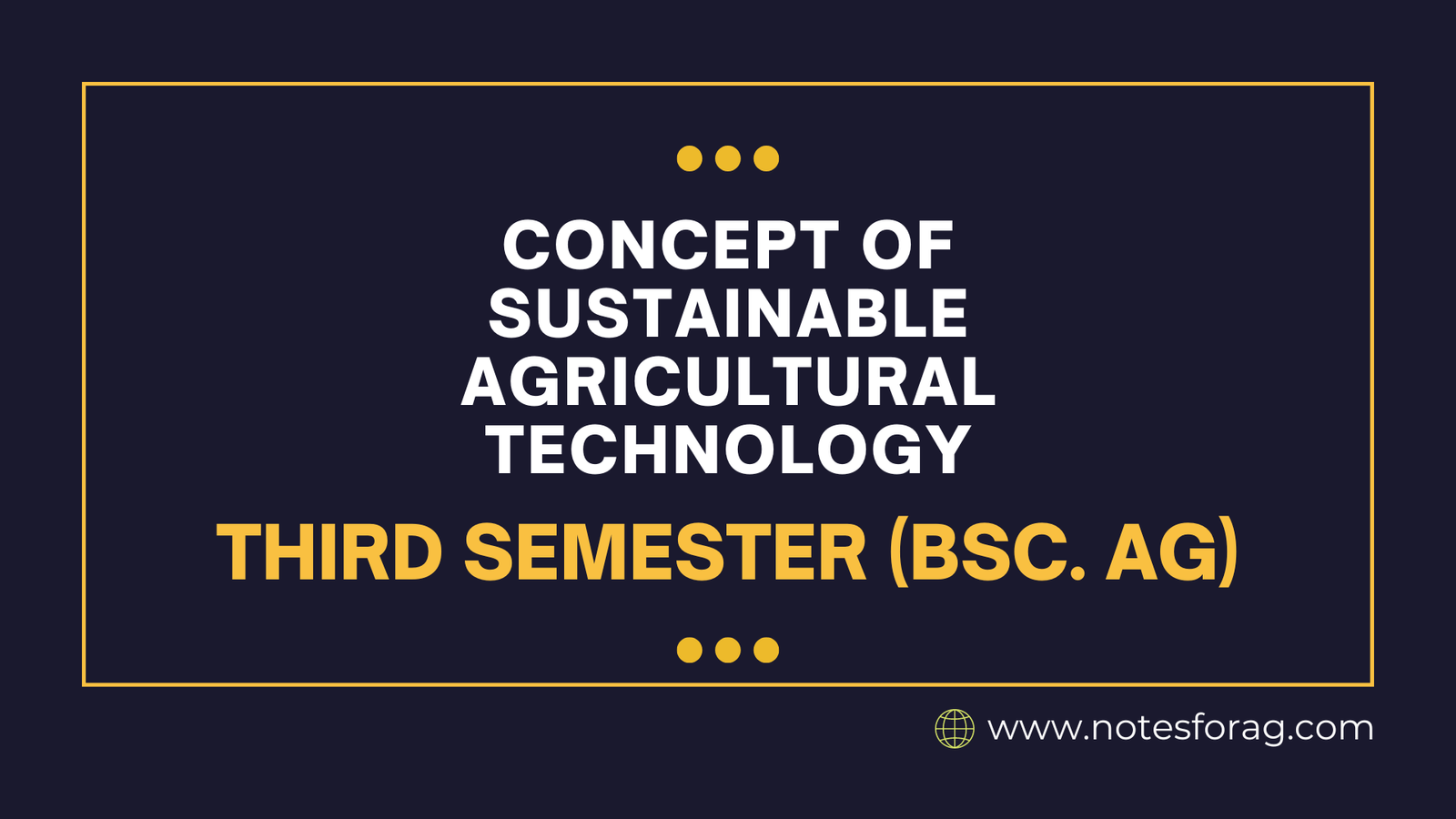Sustainable agricultural technology entails adopting innovative practices and instruments to increase agricultural productivity while reducing environmental effect, assuring economic sustainability, and encouraging social responsibility. It prioritizes resource efficiency, soil health, biodiversity conservation, and reduced reliance on nonrenewable resources. The goal is to meet current agricultural requirements without jeopardizing future generations’ ability to do the same, promoting a balance between food production, environmental conservation, and the well-being of farming communities.
Table of Contents
Introduction to Sustainable Agricultural Technology
Sustainable agricultural technology (SAT) represents a significant step forward in the endeavor to balance rising food demand with the requirement of environmental conservation. As the global population grows, there is a greater need to increase agricultural output. However, this requirement must be balanced with protecting the environment, guaranteeing the economic viability of farming operations, and improving the general quality of life for farmers and the communities they serve.

SAT’s fundamental goal is to promote a resilient and sustainable agricultural paradigm. This integrated approach includes a wide range of new techniques and instruments aimed at increasing efficiency, reducing resource waste, and mitigating environmental damage. SAT aims to foster a symbiotic relationship between modern agriculture and the natural world by utilizing cutting-edge technology such as precision farming, biotech breakthroughs, and digital data analytics.
Key Sustainable Agricultural Technologies
1. Resource Efficiency
- Precision Agriculture: GPS, sensors, and data analytics are used to optimize the usage of inputs like as water, fertilizer, and pesticides, resulting in less waste and a lower environmental effect.
- Water Management: Drip irrigation and rainwater collection are two technologies that improve water use efficiency, especially in drought-prone areas.
2. Soil Health
- Conservation tillage: Reduces soil disturbance, preserves soil structure, and reduces erosion.
- Cover cropping: Plants cultivated to cover the soil rather than for harvesting, which contributes to soil health by contributing organic matter and reducing erosion.
- Soil amendments: Use organic matter, compost, and biochar to improve soil fertility and structure.
3. Biodiversity and Ecosystem Services
- Agroforestry: Integrates trees and shrubs into agricultural systems, increasing biodiversity, improving water management, and sequestering carbon.
- Polyculture: Growing different crops in the same area to increase biodiversity, reduce insect burdens, and strengthen resilience to climate extremes.
4. Renewable energy
- Solar and Wind Power: Used in farms to lessen reliance on fossil fuels.
- Biogas Production: The conversion of agricultural waste into electricity reduces waste while offering a green energy source.
5. Sustainable Livestock Management
- Rotational grazing: Moving cattle between pastures helps vegetation recover, which improves land health and productivity.
- Manure Management: Technologies for converting livestock manure into compost or electricity, lowering pollution and reusing nutrients.
6. Integrated pest management (IPM)
- Biological Control: Pest management involves the use of natural predators or parasites.
- Cultural practices: Crop rotation, resistant types, and habitat alteration can help to minimize insect populations.
- Precision Pesticide Applications: Pests can be targeted more effectively to reduce pesticide consumption and environmental impact.
7. Climate-Smart Agriculture
- Resilient Crop Varieties: Crop types that are drought, pest, and disease resistant are being developed and used, especially in areas with changing climate conditions.
- Carbon sequestration: Agroforestry and conservation tillage are practices that help sequester carbon in the soil.
8. Economic and Social Sustainability
- Fair Trading Practices: Ensure that farmers obtain a fair price for their products, which promotes economic sustainability.
- Community-based initiatives: Encouraging local food systems and cooperatives that empower smallholder farmers and promote social justice.
9. Automation & Robotics
- Smart machinery: Autonomous tractors, drones, and robots can execute operations like planting, weeding, and harvesting more precisely and with less work.
- Artificial Intelligence: AI-powered solutions for forecasting weather patterns, optimizing agricultural management, and improving decision-making.
10. Sustainable supply chains
- Traceability and transparency: Blockchain technologies can trace food from farm to table, assuring sustainable practices throughout the supply chain.
- Reduced food waste: Technologies that improve food storage, transportation, and processing in order to reduce waste and loss.
In summary, sustainable agricultural technology aims to strike a balance between productivity and conservation, guaranteeing that agriculture can continue to feed the world while safeguarding the environment and improving the livelihoods of those who work in agriculture.
Frequently Asked Question
What is sustainable agricultural technology?
Sustainable agricultural technology refers to inventions and practices that aim to boost agricultural output while reducing environmental impact, assuring economic sustainability, and encouraging social responsibility. It seeks to address current and future agricultural requirements by balancing productivity, environmental protection, and social equality.
What are some examples of sustainable agricultural technologies?
Precision agriculture, which analyzes data to optimize resource usage; conservation tillage, which preserves soil structure; agroforestry, which incorporates trees into farming systems; and renewable energy sources, such as solar electricity for farms. These technologies attempt to increase farming efficiency and sustainability.
Related Articles

